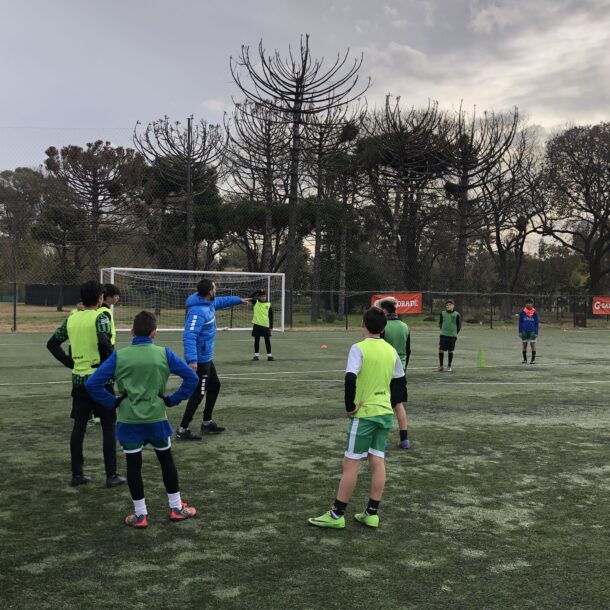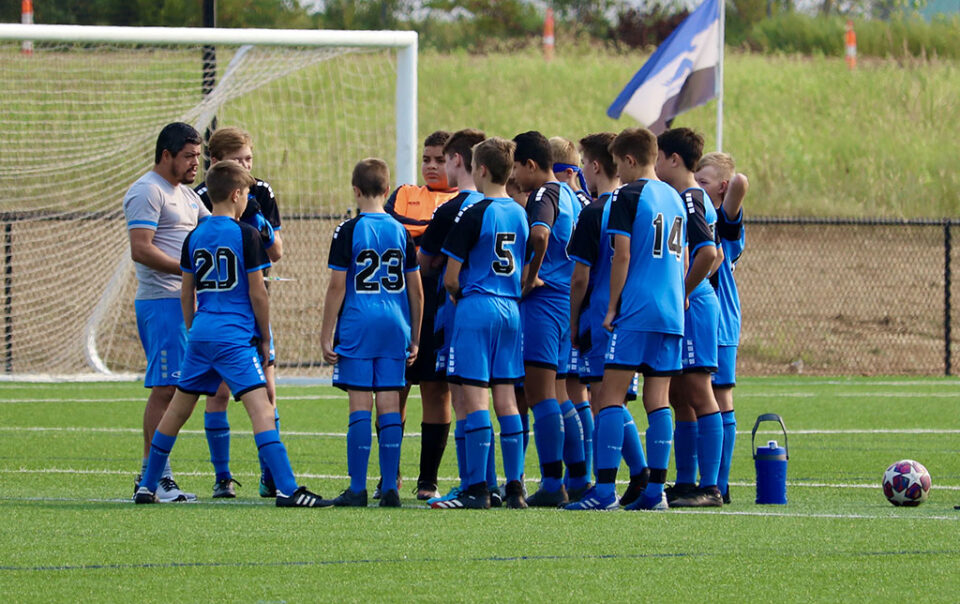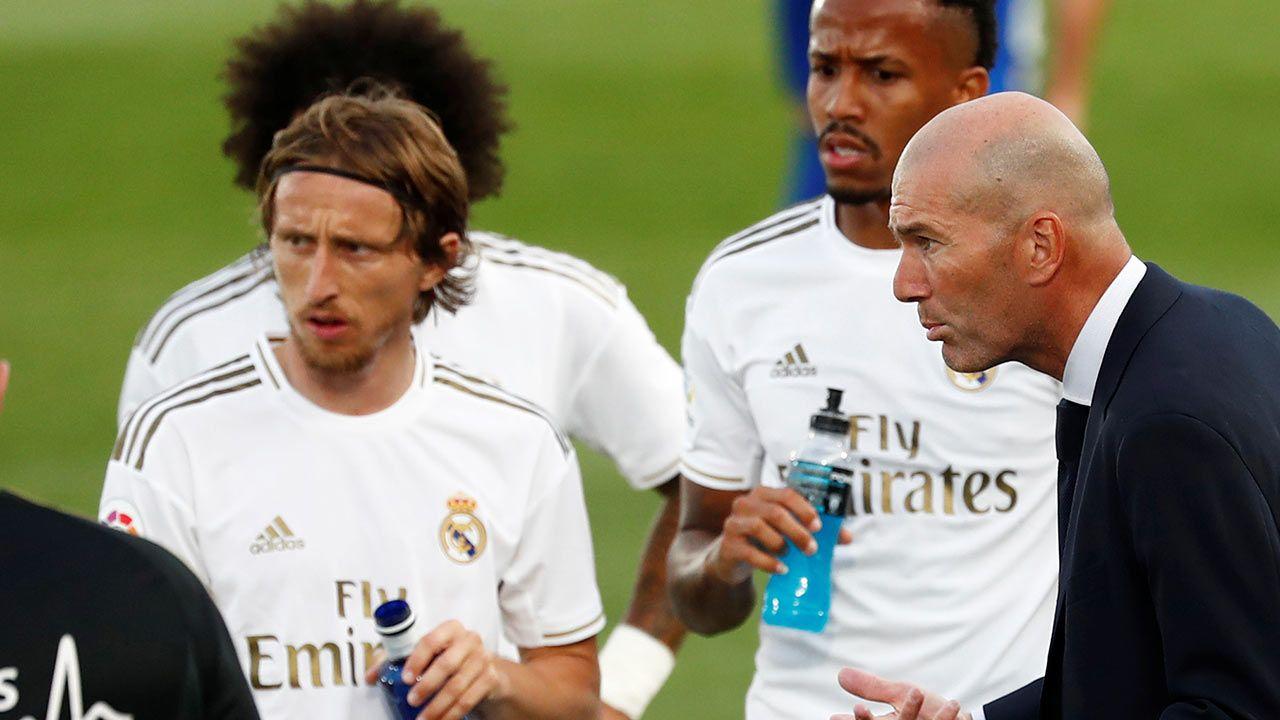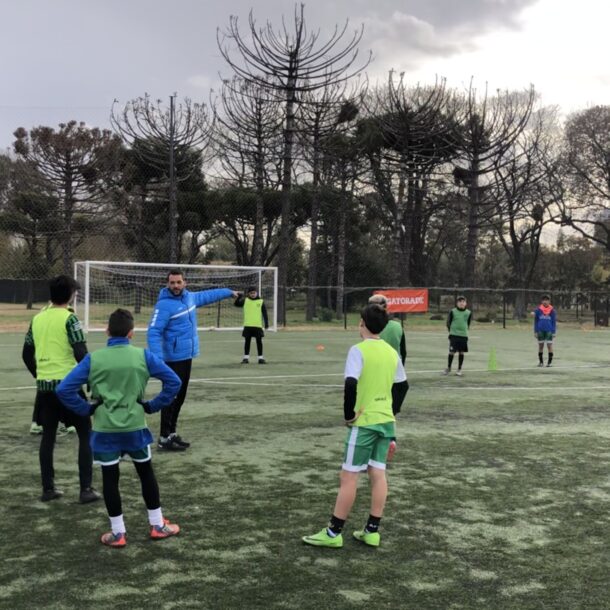
Este artículo fue escrito por Pablo Toledo, Director de Proyectos Deportivos de Rush Soccer.
As you know by now, this is a diary in which I’m simply sharing with you my current experience coaching a U9 and U11 group, in which both of them have just come out of our recreational program, and in which we have decided to work them both with the same U9-U10 curriculum (at least to start). Like I said in the previous post as well, I’d encourage you to read Part I y Part II of this series to get some context, not only to understand what we are doing, but also why we are doing it.
So here we are, one month into season, and I’ve shown you the first two 2-week training cycles we ran, in which we started by building foundational concepts for rules of the game, dribbling, and defending, and then we moved onto a second cycle in which the priority was to introduce passing and utilization of space while still keeping instances for ‘reminders’ and ‘assessments’ of the concepts practiced in the first training cycle.
From here, we thought it would make sense to progress in the next cycle with a focus on receiving the ball, as this is an obvious resulting action from passing, and shooting with the inside of the foot. Why? Because all of these technical gestures use the same surface. By practicing receiving and shooting with the inside of the foot, you’re indirectly practicing passing (at least on the technical side of it), just with a different coaching focus. To me, this is a good sneaky way of insisting with a topic without making it annoying for the player. I had a colleague that used to tell me that ‘I don’t normally talk about passing and shooting with the inside as techniques but instead I speak about kicking with the inside’ in reference to these two ultimately being the same thing. I’ve always found that funny because Cesar Luis ‘El Flaco’ Menotti, the legendary Argentinian coach, used to advise his strikers to keep their composure in 1v1 situations versus the keeper by realizing that ‘scoring is simply passing the ball to the net’.
Here is how our three week training cycle looked like.

In every session and every game of the cycle, we used similar conditions to slightly modify games, such as:
- You need three passes to score
- Goals with the inside of the foot count for two.
- You can only score with the inside and teams have 10 seconds to get a shot on goal
These simple conditions gave us the very desired repetition in game based and opposed environments. Outside of this, all of our sessions had short and simple ‘technical’ activities to ‘clean up the technique when needed’. A lot of people fear using these activities, I think it relates to the message they got from their coaching courses when they first got into this job, and I think that’s wrong. There is absolutely nothing wrong with doing simple, unopposed activities. The question to me is for how long and most importantly what for.
At this stage, I use plenty of these activities when I know that they don’t know something (no fixing what’s not broken). What for? To paint a clear picture, to make it as obvious for the player as I can, so if (for example) I’m trying to teach a player to receive with their back foot to turn in one move, I’ll definitely make two lines, a simple pass, and tell the forward that ‘you have two touches, one to control and one to shoot’. 10 minutes, 15 max, and I know everybody got it, it’s clear as water that you need to open your body and receive with the back foot into space to set the shot. Then let’s throw them into the game based and opposed situation and see if they can do it there.
Now, what I wanted to share with you to wrap up this post is what we did after this cycle. Think about it, now we are seven weeks into season and we’ve covered many topics, yet not all of the ones we have listed in our curriculum chart (nothing wrong about that). This was when we decided it was time to put our foot on top of the ball and make a checkpoint. What do you think they’ve made progress on and what hasn’t really settled yet? So we took our curriculum topic chart and used a red-yellow-green criteria to assess and this is what we came up with.

Red for us are topics that we haven’t presented yet. Light red means we have presented them but not a lot of progress has been made, and yellows are those that have definitely improved even if far from perfect. No greens yet, we were not expecting them anyway, this is what we are hoping to master in two seasons, not seven weeks…
Based on this assessment, we decided to organize the following training cycle as a four week plan in which we’ll review all of the things we’ve already done while introducing the concepts we haven’t done at all in short blocks (remember when in previous posts I was explaining that when a concept is new we repeat almost in consecutive days and as we see behaviors settle we start spacing revisions out?), so that’s what you can see below.

My last comment in this post is that you can see on the table how as of this cycle we started separating the U9 session from the U11 session. Why? Because normally the older team seems to be evolving faster. They’re just older and more mature, so in some cases we think they might be able to do activities that are a bit more complex and cognitively demanding. In that sense, we are hoping that by the next season, they’ll have the foundations of this curriculum solid and we’ll be able to have them ‘catch up’ and start working with the curriculum made for their age group instead of one down.
I’ll let you know how it goes in one month, coach. Hope this gives you ideas!











